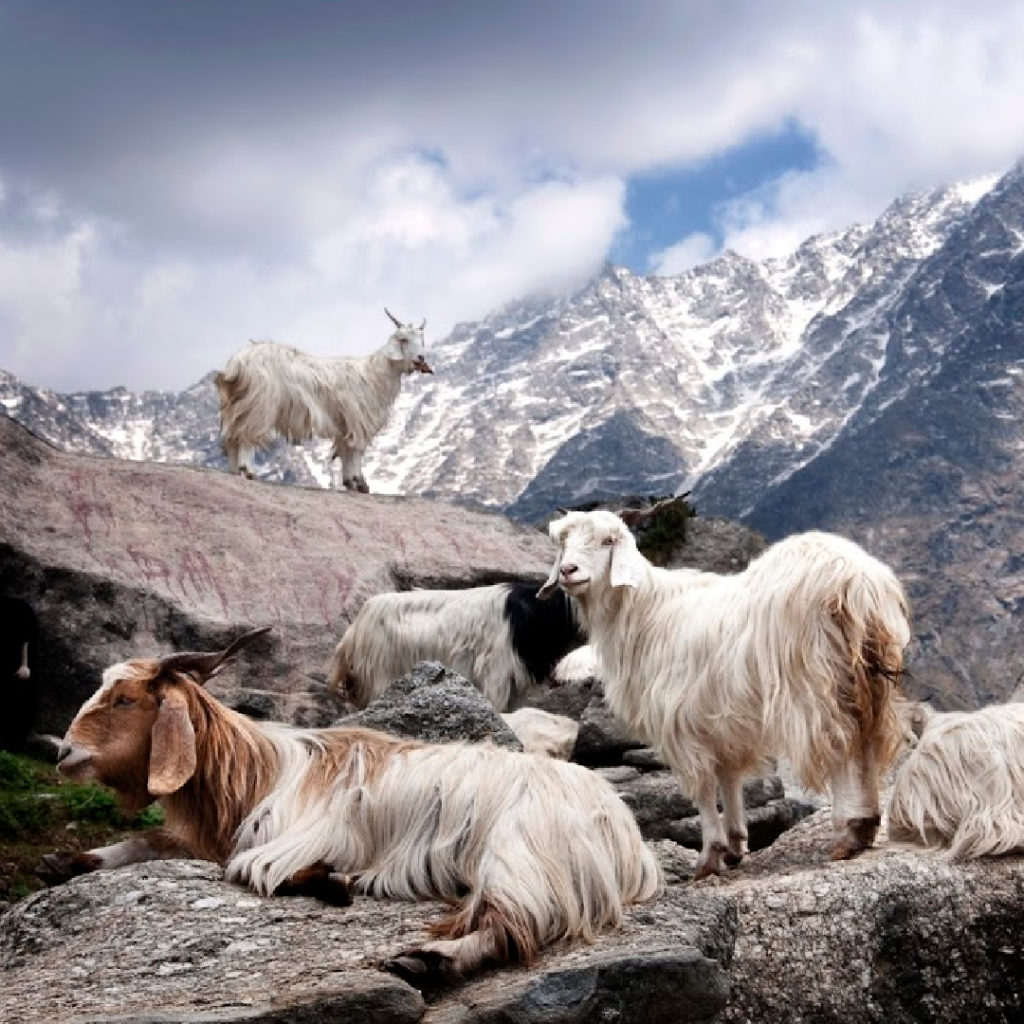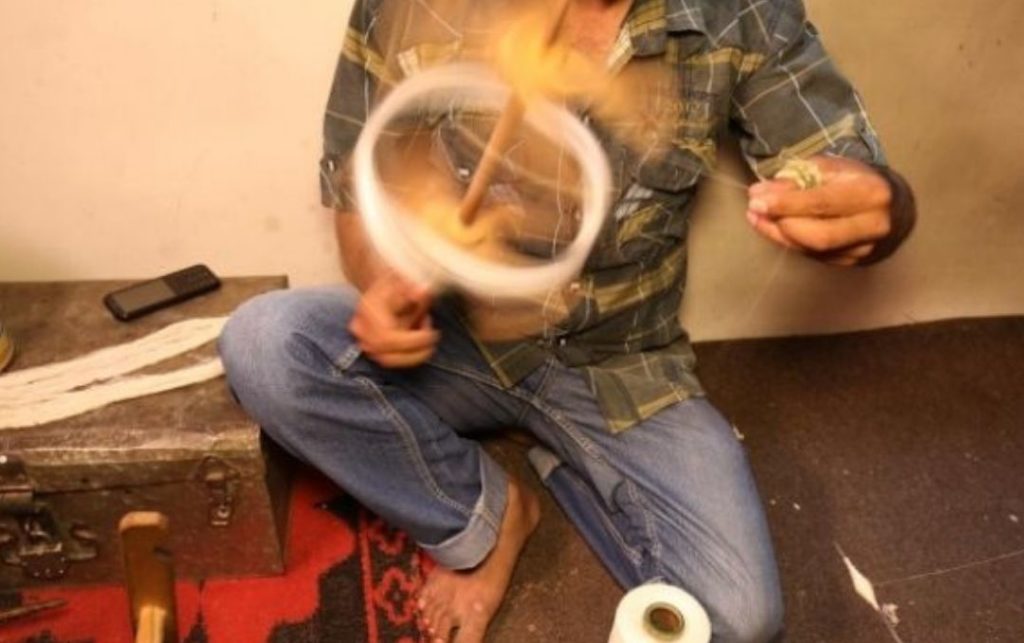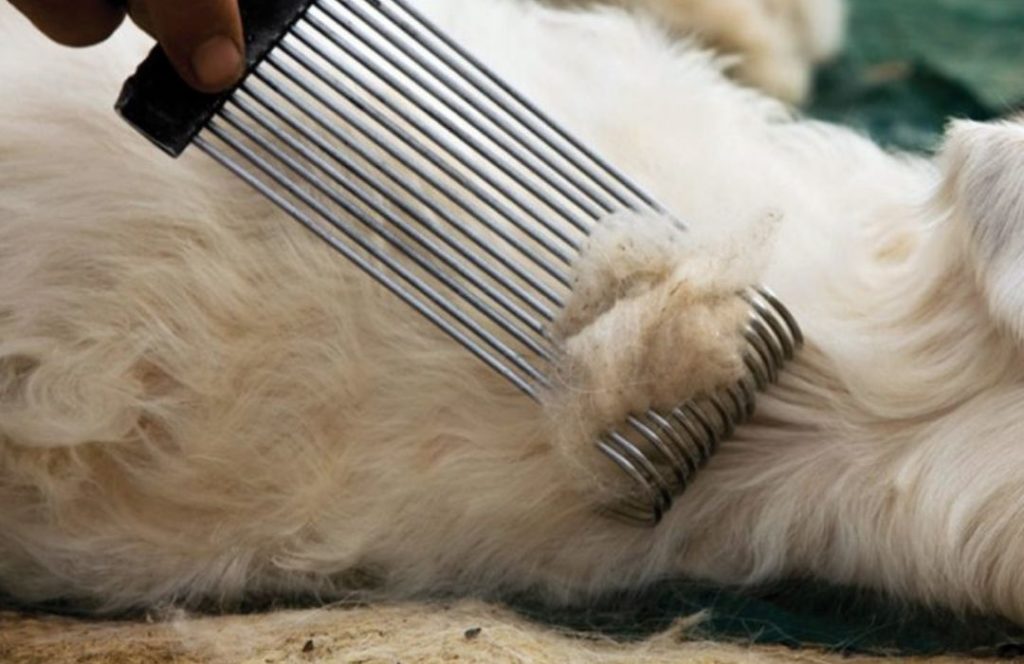No. The answer is reflected in the ethical procuring of Cashmere wool from Changhthanghi. The endless beauty and softness of Cashmere wool define the luxury of each masterpiece of Pashmina Art. The process of procurement is purely ethical and no animal cruelty is in any step of Pashmina. All the breeds of Goats that produce Cashmere wool develop the wool on their bodies and later on, they are combed out. The finest Cashmere wool is procured from the undercoat of Changra Goats.
Ethical procuring of Cashmere wool

The Changhthanghi mountain in the Ladakh region is at a high altitude. The winters are the coldest there. The temperature goes to minus 20°C. A rare breed of goats dwells in the feet of mountains. The Goats are called Changra Goats. They are also called Cashmere Goats. The goats develop thick wool on their bodies in winter to overcome the cold season. The goats are mainly raised for the production of fine wool. As, in summer, the goats shed wool to feel the air of summer. The wool is manually combed out by the herders of the Changpa tribe who raise the Goats of Changhthanghi. The soft wool is called Cashmere wool. Therefore, there is no cruelty toward the Changra Goats.
Handcrafting of the finest Cashmere

Art of Pashmina begins as soon as the packets of Cashmere wool reach the valley of Kashmir. The tufts of Cashmere wool are cleaned, soaked, and dried to further get the premium Cashmere wool. The Cashmere wool is further moved ahead to the process of Spinning. Spinning is the meticulous process of transforming Cashmere wool into the finest cashmere yarn. After the Spinning process, the fine Cashmere yarn is moved to the next process called Weaving.
The process of Weaving is intricately turning the Cashmere yarn into the finest Cashmere fabric. The warps and wefts are sophistically woven with each other to present the meticulous Cashmere Fabric to the further process of designing. The weaving is mostly done by menfolk of the valley on the handlooms made of forest wood. The artisans weave by using their feet in coordination with their hands. The meticulous harmony of aura and artisan creates the fine Cashmere Fabric.
Further, the fabric goes on to the designing process. The design starts as soon as the Cashmere fabric reaches the hands of artisans. Diverse styles are given to the Cashmere Fabric. Thus, creating a wide array of masterpieces. Henceforth, the Art of Pashmina is the creation of diverse accessories from the finest Cashmere. The versatile designs confer to the world of luxury in several ways. The distinct styles cater to all genders. The styles and designs perform the ways of luxurious fashion in the most elegant looks.
History teaches the Natural Ways
It all started when a Persian saint was traveling across the globe. Mir Syed Ali Hamdani was a sage from the Middle East. The footprints of a saint Mir Syed Ali Hamdani from the middle east came to Kashmir with 700 craftsmen to adorn the beauty of the valley and to spread the holy message. He rested his feet in the region of Changhthanghi Ladakh. Thus, the saint landed its appearance in the Changhthangi Mountain in Ladakh. While perceiving nature, he locked his eyes on the Goat of marvelous wool. Awestruck with the softness and fineness of the wool, he made socks out of it and gifted them to the Sultan Zain-ul-Abideen of Kashmir Valley. Perceiving the beauty of wool, suggested making an industry that cultivates the Pashmina in desirable styles.
Even the name Pashmina, derived from the Persian word, pashm, meaning "the soft gold" is exquisite in being. Therefore, from the 13th century till now, there is no harm to the animals as the origin was serene and this needs to be kept in the same serenity till life.
Also read: DO VEGANS WEAR CASHMERE SCARF?
No Animal Cruelty is in the process

There is no Animal Cruelty in the whole process of Pashmina Art. Procuring Cashmere by combing out excess wool from the bodies of Changra Goats is in a way ecological access for the Goats. Therefore, several measures are taken into consideration while combing out. One of them is no use of machines, the herders of the Changpa tribe manually comb out the wool to ensure the glory of nature and no harm to animals as well as the environment. The upheaval of every step in the most sustainable way is the concept of crafting at Pashmina.com.
Also read: IS MOHAIR BETTER THAN CASHMERE?